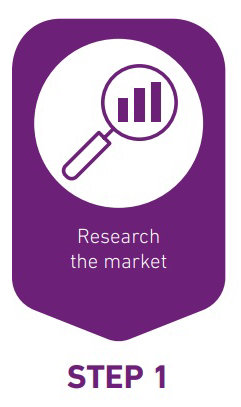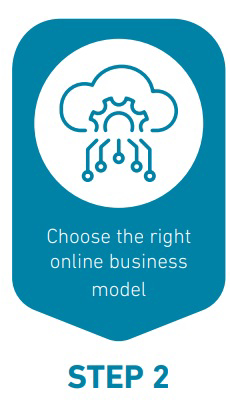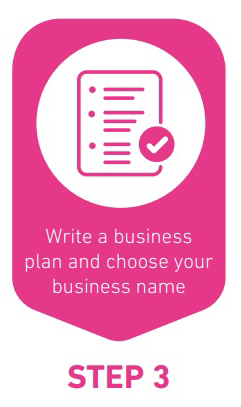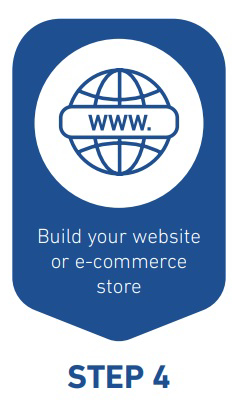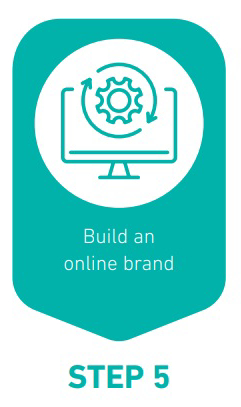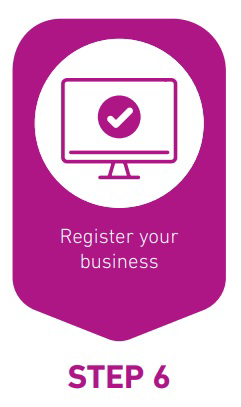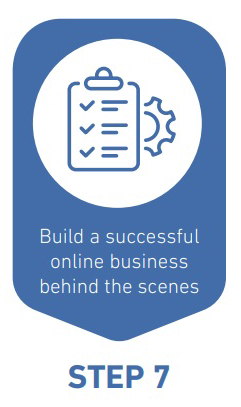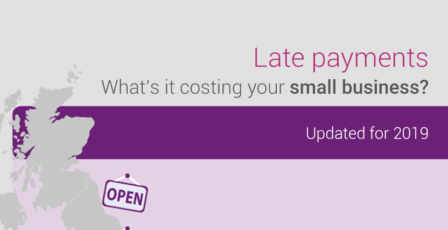How to start an online business – a step-by-step checklist
Starting an online business
Launching a small business online offers many benefits, including the ability to reach niche and global audiences, and work flexibly. All kinds of businesses can be run successfully online, and there are a growing number of ways to monetise your product or service.
The possibilities for digital entrepreneurs are vast, whether you want to take your career solo, switch to a brand-new sector, or turn a hobby into a business.
We’ve put together this step-by-step start-up checklist to help you avoid the pitfalls and maximise your chances of being successful. From how to get started, to knowing how to survive and thrive.
Step 1: Research the market
Whatever your business idea is, you’ll need to start with researching the market, including your customers and your competition. Will your business answer a genuine customer need and desire? Do you have a point of difference that sets you apart from your competitors? How will the market evolve and grow as customer priorities shift and the world changes? Market research such as this is a critical first step in the process.
Once you’ve identified a clear market and purpose for your business, you can start thinking about your product or service and how to deliver it online. Remember that today’s consumers are increasingly looking for added value, including sustainable products and services, and great customer experiences across multiple digital channels, including WhatsApp and social media.
There are a range of government-backed support schemes available for new start-ups including business coaching and mentoring. It’s well worth investing the time to learn the skills you’ll need upfront, including finance, sales and marketing.
Step 2: Choose the right online business model
There are a range of ways to run your business online and make money from it. The model you choose will depend on your business type and how it will work behind the scenes. For instance, if you want to launch an online store, have you got the space and time to store and deliver products? Here are a few online business model options to consider:
E-commerce
As an e-commerce business, you could make money from selling products or digital products like print-on-demand photographs, via an online store. Many e-retailers start off by selling their products on online marketplaces like Etsy, as an individual seller, before launching their own online store.
Alternatively, you could start a dropshipping business. Instead of buying and storing stock upfront and delivering orders, you work with a third-party wholesaler to provide and deliver products for you. You only have to pay your third-party partner when your customer places an order. Dropshipping can be a good way to test the market and see what products consumers want to buy, or to sell a wide range of products.
Advertising
Online advertising1 is the fastest growing area of advertising across the world, and the UK is the largest market in Europe. It’s also the main way many online businesses make money, especially content providers. Other businesses pay you to advertise their product or service on your website, app or social media channels. Which means you can provide content and services such as entertainment to your customers for free.
There are a range of ways to advertise online, including paid-for banner ads, influencer marketing, and sponsored content.
Freemium
Many businesses offer their customers the best of both worlds. Some free content or services, with the option to upgrade and pay for a full premium service. Often freebies come with adverts, while upgrading provides an ad-free experience. One benefit of freemium is that it gives your potential customers the chance to ‘try before they buy’ – helping to market your business and build customer relationships.
Subscription
Instead of buying a product or service as and when they need it, many consumers are signing up to subscriptions. It’s a growing trend, not only for services such as software and entertainment, but for products like food and drink subscription boxes. With a subscription, consumers get continuous services and regular products. In return, businesses get loyal customers and a steady income stream.
Subscription works for all kinds of online businesses, including services like online tutoring, content providers, and e-retailers. It’s also a good add-on. For example, you could offer a subscription box service for healthy dog treats, as part of your dog walking business. Sustainability could also help drive the trend, with consumers increasingly renting products like clothes and furniture, rather than buying them.
Step 3: Write a business plan and choose your business name
Writing a business plan is a great way to think through your business idea clearly and make sure you know how each step is going to work, so you can avoid potential pitfalls. It should cover every aspect of your business including your purpose, what sets you apart from your competitors, your online business model, your target market and how you’re going to sell your products or services. It should also include a forecast of revenue and costs, the objectives you’ve set for your business, and a plan for future growth.
One of the most important aspects of your online business will be your business name. It will need to work across multiple channels – as a domain name for your website, and on social media.
Experts recommend choosing a domain name for your website that’s short, catchy and easy to spell. Remember that your domain name is also a key part of your brand.
One option is to include what you do in your name, to help customers find you more easily, with keywords like jewellery, dog walking, or bakery.
To get started, you could use an online domain generator to get a list of suggestions relevant to your business. To help you choose, ask yourself, does your name sound, look and feel right? Does it differentiate you from your competitors? Will it resonate with your customers? Will it stand the test of time and grow with your business? Once you’ve decided on a name, you can check if it’s available and register it with a domain name registrar.
Step 4: Build your website or e-commerce store
Choosing the right web hosting service is essential as your website or online store will need to work seamlessly for your customers. There are lots of providers to choose from, so compare, read reviews, and select the one that best suits your business needs.
Fortunately for small online businesses, building a website or online shop can be straightforward and affordable. Website builders and e-commerce platforms like Wix, Squarespace and Shopify provide the tools you need to build your own and are easy-to-use. Once again, select the one that best suits your business needs. Remember to think about the features you need now and, in the future, such as a chatbot to provide help and support to customers.
Overall, you need a website or online store that’s mobile friendly, integrated with social media platforms, has product pages that are designed to encourage purchase, has great search engine optimisation, and able to grow and adapt in line with your business.
Using an e-commerce platform to build your online store will give you all the tools you need to sell online, enabling you to add products and descriptions, manage stock and orders, and continuously improve the customer experience based on data and analytics. Alternatively, you could use a content management system (CMS) such as WordPress, which offers a wide range of plugins for extra functionality, or custom build your own online shop from scratch.
Before you can start selling online, you’ll also need a merchant account to accept credit and debit card payments from customers. Merchant accounts are available via your bank, or from a merchant services company such as Worldpay. Or, you could choose to partner with a payment facilitator instead, such as PayPal or SumUp. Checkout and payment is a crucial step in the online customer journey, so it’s well worth taking the time to research and find the best provider for your business.

Step 5: Build an online brand
What do you stand for? Your brand goes beyond what your business does. It communicates ‘who’ your business is and what you stand for – to stakeholders including potential customers, investors, suppliers, partners and employees.
Start with a clear mission and unique selling point (USP) to shape your brand’s visual identity and tone of voice. Your visual identity includes your logo, brand colours and brand fonts. Your tone of voice is how you sound online, both in written and spoken content. There are free and affordable online tools you can use to create brand elements like your logo, or you could work with a graphic designer.
The more you get to know your customers, the more effectively you can target them with your marketing and communications. Here are some ways you can reach your target audience online:
Social media is essential
Depending on your business, it may not be enough to just have a website or online store. You will need to connect with your customers on social media.
Social commerce is on the rise, with consumers buying direct from social platforms like Instagram. With social commerce, consumers often buy based on customer reviews. Asking customers to leave reviews and feedback is one of the most important things you can do, as well as being simple and affordable.
Social media platforms are free to use and there is a growing army of micro influencers out there who could help to promote your product or service.
Social commerce will also encourage online businesses to use technologies like augmented reality (AR) and virtual reality (VR). This technology could help you create a better customer experience and a competitive edge. For instance, by enabling customers to try on a wearable product before buying it. One example of AR already established is the filters you get on social media platforms like Instagram and Snapchat.
Content delivers many benefits
Up-to-date content optimised for SEO will help customers find you on search engines like Google. Content includes everything from blogs, product pages and informational resources, to video and audio. It will also help you to showcase your product, service and expertise, and build a relationship with your customers. For instance, you could use short video tutorials to demonstrate your skills as a baker on social media, as part of your online bakery or subscription box service.
As part of your content marketing strategy, you could also send your customers regular emails, to share relevant news and offers.
Paid-for advertising
There are a growing range of ways to promote your business online. From pay-per-click services like Google Ads, which help you appear higher up the list in online searches. To affiliate marketing, where you advertise your product or service on a relevant third-party site.
Step 6: Register your business
As with any business, you’ll need to register with HMRC and decide on the structure of your business. We recommend you speak to an accountant and/or solicitor to get bespoke advice, as your business structure will determine your legal responsibilities, and how you pay tax and National Insurance.
Sole trader
As a sole trader, you run your own business as an individual and are self-employed. You keep the profit your business makes and file an annual Self Assessment Tax Return with HMRC to see what tax and National Insurance you need to pay. You may need to pay VAT too, if your business turnover is over the VAT registration threshold. You’ll also be personally liable for any losses your business makes.
Partnership
In a partnership, you and your partner(s) share personal responsibility for your business, including any losses. Together, you share the costs and profits, with each partner paying tax on their share. A partner can be a ‘legal person’ such as a limited company, as well as an actual person. You’ll need to choose a ‘nominated’ partner who’ll be responsible for submitting the business’s tax returns to HMRC and keeping business records.
Limited company
As a private limited company, your personal and business finances are kept separate. This means you can run a business without any risk to your personal wealth or assets, as liabilities including debts and legal action are limited to the company. You may also pay less tax. Limited companies pay corporation tax on profits, which could be less than the income tax paid by sole traders and partnerships. As well as registering with HMRC, you’ll also need to register with Companies House and prepare documents agreeing how to run your company. You’ll need to keep company and accounting records and have an official company address.
Step 7: Build a successful online business behind the scenes
Regulation and legislation
There are a number of external factors that could affect your business, including the general and sector-specific regulations and legislation you will need to comply with. Both voluntarily and by law. Remember that your responsibilities can vary, depending on the countries you’re operating in.
Rules for selling online include clear communication with consumers to share the buying process, including payment options, delivery options and costs, as well as information about your business. There are also rules for selling digital services that customers download or stream online, like computer games.
You will need to comply with regulations and legislation around data protection and online payment security standards. Data protection includes rules around electronic marketing and how you collect, store and use customers’ data.
Security can help you build consumer trust
As an online business, you’ll need to have strong cyber security and anti-fraud measures in place. A key part of this is giving your customers a safe and secure way to pay online and on mobile. Two of the most popular methods are digital wallets like Google Pay and Apple Pay, and mobile payment services such as PayPal and Revolut. Buy Now Pay Later (BNPL) is another huge trend.
Look after your health and wellbeing
An online business never sleeps so it’s more important than ever to look after your self-care. Exercise and socialising can help you to de-stress, while a healthy diet will also help you to stay energised. Find a workspace that inspires you, whether that’s a co-working space to connect with other digital entrepreneurs, or a garden office close to home.
Investing some time in learning the business basics is also important. Find out more about starting your own business with our seven steps for business success.
How can we help?
We provide tools and solutions to help small business owners make better decisions about their suppliers and customers, understand and manage their own business credit score, and improve their marketing with market leading business data tools:
- Experian Business Express allows you to run credit checks and monitor any company you work with, so you can spot signs of trouble early on and make informed decisions.
- With My Business Profile, you get full visibility of your business credit profile, enabling you to understand what’s affecting your company credit score and preventing you from being able to obtain that all important company finance.
- BusinessView helps you find new customers fast. Your small business marketing relies on up-to-date business marketing data.
Contact us
Make your business stronger. Review your own business credit score and improve it.
Get in touch